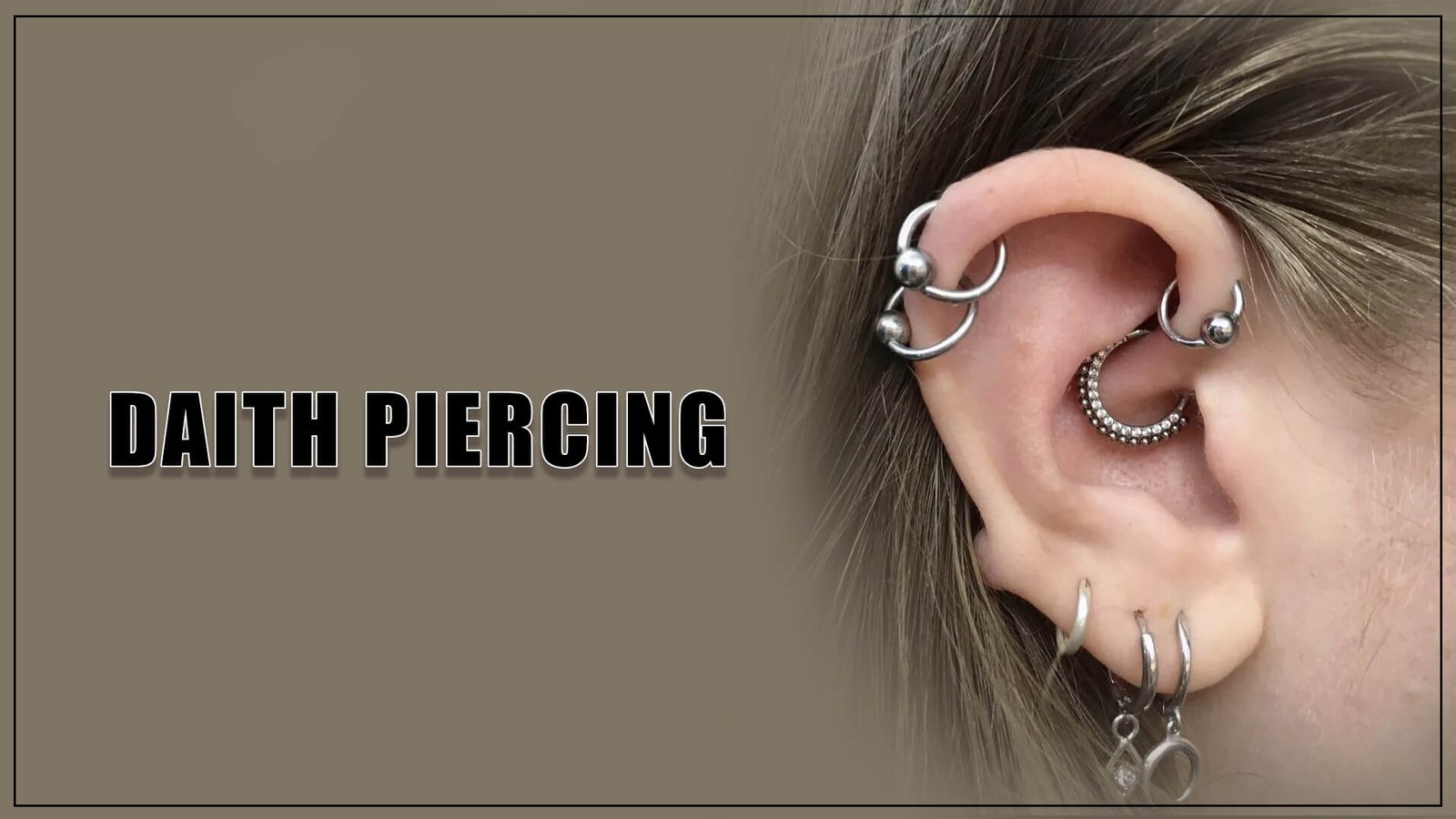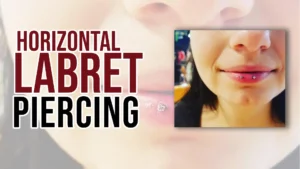When we look at people with pierced ears, we first notice how subtle their way of styling is. The jewelry you wear on your ear plays a great role altogether. If you have plans on getting a daith piercing, then you have a series of decisions to make. How do you want to decorate your ear? What jewelry will suit you best?
Since you have decided on getting a daith piercing, the only thing that can stop you is being unable to choose what jewelry to wear. The piercing hurts, without a doubt.
Daith piercings do not hang in your ear, nor does it dangle. It is more like a hoop that goes through your cartilage bone. The daith piercing is done at a part that is thick and curved. Hence, it is likely to hurt more than normal.
WHAT IS A DAITH PIERCING?
When you touch your ear canal and move your finger along it, you will feel a cartilage bone sticking out. This area is where the faith piercing is done.
It is a common trend for people to get their cartilage pierced. Most women like to wear different kinds of jewelry to adorn their ears. The increased demand for daith piercings has made it possible for many women to discuss what suits them. Not only this, you don’t even have to be worried about whether you will be accepted in a corporate environment with daith piercing or not. Official environments are becoming more welcoming toward piercings and tattoos.
Moreover, if you come across a war culture where it’s not acceptable, you can easily hide a daith piercing. Since other cartilage piercings appear on the removal of your ear, this one is the opposite. You can easily tuck it away with your hair or use subtle jewelry.
Compared to other piercings, a daith piercing will take a longer time to heal. Therefore, a longer healing time means you will come across more occasions where you end up with piercing complications. It is normal for people to get lazy in aftercare practices or come across a piercing bump. You can be aware of the following facts before getting a daith piercing.
DAITH PIERCINGS FOR MIGRAINES
Acupuncture is known as a practice in which a needle is put through your ear in a manner that a hole is formed. These needles are put strategically so that they alleviate pain. Sometimes these persons show improvement in mental health or even lose weight. Many women who got their date pierced witnessed a change in their migraine symptoms.
The idea behind piercing your acupuncture points is to manage a good flow of blood. This way, your active points are permanently opened. This helps you to fight multiple health problems.
DAITH PIERCING PAIN
Many people think that daith piercing is easy. However, it may be painful since it is being done on a cartilage bone. One of the most painful piercings you can get is a daith piercing. However, it will still not exceed expectations. You might be expecting a whole lot more pain than the real.
One key aspect of reducing your pain while getting the piercing is to make sure that you hire an expensive piercer. They are efficient in pain tolerance and make it possible for you to have a comfortable experience.
Daith Piercing Healing Time
The average period for any daith piercing to heal is about 6 to 9 months. On the contrary, it will take longer if you come across any complications. People who do not take good care of their piercings are unlikely to come across complications.
Since this piercing is done on a cartilage bone, sometimes it appears as if it has healed, but the inside is still wounded. Make sure you get your piercings by a professional piercer before you take off your regular jewelry.
Aftercare Tips:
You may be wondering how to keep your daith piercing clean because it is not easier to locate. Follow these approaches to better heal your daith piercing:
- Use a saline solution to compress. You can use a paper towel for this aftercare method. Dip the towel in saline solution and hold it on the piercing for about 3-5 mins.
- Use a mist spray consisting of saline solution. This will easily reach your daith piercing. Simply spray each side of the piercing, and you are good to go!
- Avoid moving your jewelry too much. This way, you will end up damaging the wound. Moreover, a piercing on the cartilage is relatively more sensitive, and you will come across bumps.
- Avoid using harsh jewelry. Some people have sensitive skin, and they often face jewelry rejection.
When it comes to aftercare, there is no alternative to saline solution. Some people rely on tea tree oil. However, this could deeply affect your healing procedure. If you rely on any other product, you will be exposing your skin to chemicals. Tea tree oil is quite famous among people in terms of skincare. However, tea tree oil is quite harsh, and you may come across it.
Common Daith Piercing Side Effects
We won’t call it a side effect. They are common problems that people face in any kind of piercing. You can easily tackle them. Half of your problems will be sorted if only you manage to use jewelry of 14-karat gold or more.
Some side effects that you should have a grip on are:
Piercing bumps:
The most frequent adverse effect, particularly with cartilage piercings. Bumps are often either rashes from irritation, pustules from poor hygiene, or hypertrophic scars as a result of trauma. Visit your piercer for a diagnosis and treatment if a bump develops around a piercing. The good news is that, with the right treatment, the great majority of piercing bumps resolve on their own.
Piercing rejection:
This typically occurs following a severe injury to the piercing, such as a significant snag. Red, flaky skin surrounding the piercing site, a developing piercing hole, or jewelry that moves visibly are indicators of piercing rejection.
Piercing infection:
Although they are less frequent than you may imagine, piercing infections should nonetheless be taken seriously. A piercing infection that is left untreated might have harmful medical consequences. Poor cleanliness habits are frequently the cause of piercing infections. Nevertheless, it’s wise to be alert for the warning symptoms.
Final Verdict:
People are often scared that they will suffer from keloids if they get daith piercings. This is a common misconception. You can avoid these myths and focus on what ways you can use to prevent such problems. Keloids are only possible to occur if they are genetically related. However, it is only found in about 10% of the population. So you are more than safe to get a piercing.
FAQs:
How do I prepare myself for daith piercing?
Avoid caffeine in all possible cases. This is likely to increase the blood flow and cause problems. You can eat a light meal before getting your daith piercing so that you don’t end up feeling dizzy. Moreover, you can ask your piercer to elaborate further on anything that you particularly need to do.
How likely is my daith piercing to hurt?
The pain is subjective. You can expect a lot of pain and come across very little. However, the daith piercing hurts slightly more than the other ones. This is because it pierces through a cartilage bone, which means a thicker area than the usual ones.
How long do I need to care for my daith healing?
Commonly it takes nine months. You can keep a safe margin of 12 months. Since sometimes people come across bumps and other problems. However, if you take proper aftercare, then you won’t suffer from any of these problems.





